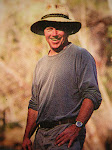There's an art to paddling places like St. Augustine. Like a photographer who comes prepared to change lenses as the scene dictates, the paddler should come prepared to experience all aspects of the area—including its rich history. By "outfitting" ourselves with a little background information and being willing to occasionally put a filter of imagination over our eyes as we survey our surroundings, a casual nature outing transforms into a meaningful exploration of one of the most interesting and history-rich places in the state.
Sometimes when I paddle near St. Augustine, I try to imagine the scene as Alonso Cabale saw it that day in 1763 when he sailed for Cuba. It was a somber day in one of the most eventful years in Florida’s history. After a 250-year reign, Spain had lost Florida to Great Britain. Now, the entire population, including Alonso and the last 89 Timucua Indians, was sailing for an uncertain future in Cuba.
I picture Alonso leaning against the wooden railing and scanning the marshes around the Castillo and. I wonder what images reeled through his mind, formed in the 54 years since his birth in a mission village north of town. I picture him squinting toward the north, far up the broad channel of Tolomato River for a final glimpse of the hazy tree line of Guana Peninsula, where Tolomato and Guana Rivers join. Perhaps he recalled the huge shell midden where his ancestors had gone for over four thousand years to clean fish and shuck oysters, or the nearby ceremonial site where he heard the tales explaining his people’s origins. I wonder if his elders sat with him at the edge of this 100-meters wide shell ring and recounted the beliefs of his ancestors. Had they taught him their spiritual connection to the land and instilled in him a respect the plants and animals and the need to give thanks for everything the land gave?
On his forays into the forest, Alonso would have seen the ruins of the Christian mission that served a village near the ancient shell ring. This was one of many such missions that had been built across North Florida. It was at these remote outposts of Spanish influence that his people had been forced to renounce the beliefs of their ancestors and proclaim allegiance to the unfamiliar religion of the Spanish. They had been taught sacred tales inhabited by plants and animals they knew nothing about. They had been made to recite tales of great deeds done by people from unfamiliar cultures on mountains and in valleys they had never seen.
The final blow to the mission system came from English raiders from the north who systematically destroyed the missions and their associated Indian villages. Most of these raids had ended by 1704. By the time Alonso was born, five years later, the Florida interior was an uninhabited wilderness punctuated by widely scattered ruins of decaying missions and overgrown clearings that once held thriving native villages.
The mission period lasted just over a century. As the dust settled from the English raids, all that remained of the Timucuan and Florida’s other great native cultures were a handful of villages near St. Augustine. In his youth, Alonso could have hopped on a horse and, in a leisurely day of riding, visited most of the surviving native people of Florida. The names of these small villages, most of which had populations counted in the dozens, read like a sad obituary of a people with no mourners. For the children of St. Augustine, names like Yamasee, Guale, Apalachee, Jororo, Pohoy, Tocobago were probably more strongly associated with these impoverished villages than the once-mighty nations they represented.
Shifting his gaze a bit to the left, Alonso could have seen the small copse of trees in the marshes north of St. Augustine that marked the site of Ft. Mose—the first free black settlement in the New World. Like Alonso, most of the residents of Ft. Mose had been born on the land of their ancestors. The life-path that brought them here involved slave raiders attacking their coastal West African village, being packed like sardines into ships and enduring a hellish ocean crossing that killed many, being sold and resold as slaves, toiling on English plantations, suffering unspeakable brutality and finally escaping to the relative freedom of Spanish Florida. Now they stood with Alonso Cabale at the railing of a boat carrying them to an unknown fate. Like their Timucua shipmates, the free blacks of Ft. Mose had no intention of living in a Florida under English control. They were bound for Cuba and the next chapter in their tragic lives.
As he watched Florida growing small on the horizon, I wonder if Alonso had a sense of that moment’s gravity. I wonder if he knew that he would be the last Timucuan Indian to lay eyes on Florida. And when he died in Cuba a few years later, I wonder if Alonso realized that his final heart beat would be the last in an unbroken thread of beating hearts that stretched back nearly 14,000 years.
The history that has played out in the marshes of St. Augustine over the last five centuries is undeniably heavy. But to ignore the history of this or any other place we explore is like going on a photo shoot with only one lens. You get home with a lot of great pictures of mountains, but it’s not until some beautiful yellow petals fall from your boots that you realize you had been standing in a field of foxgloves.

1 comment:
Best history lesson I've had all week, and beyond,
Post a Comment